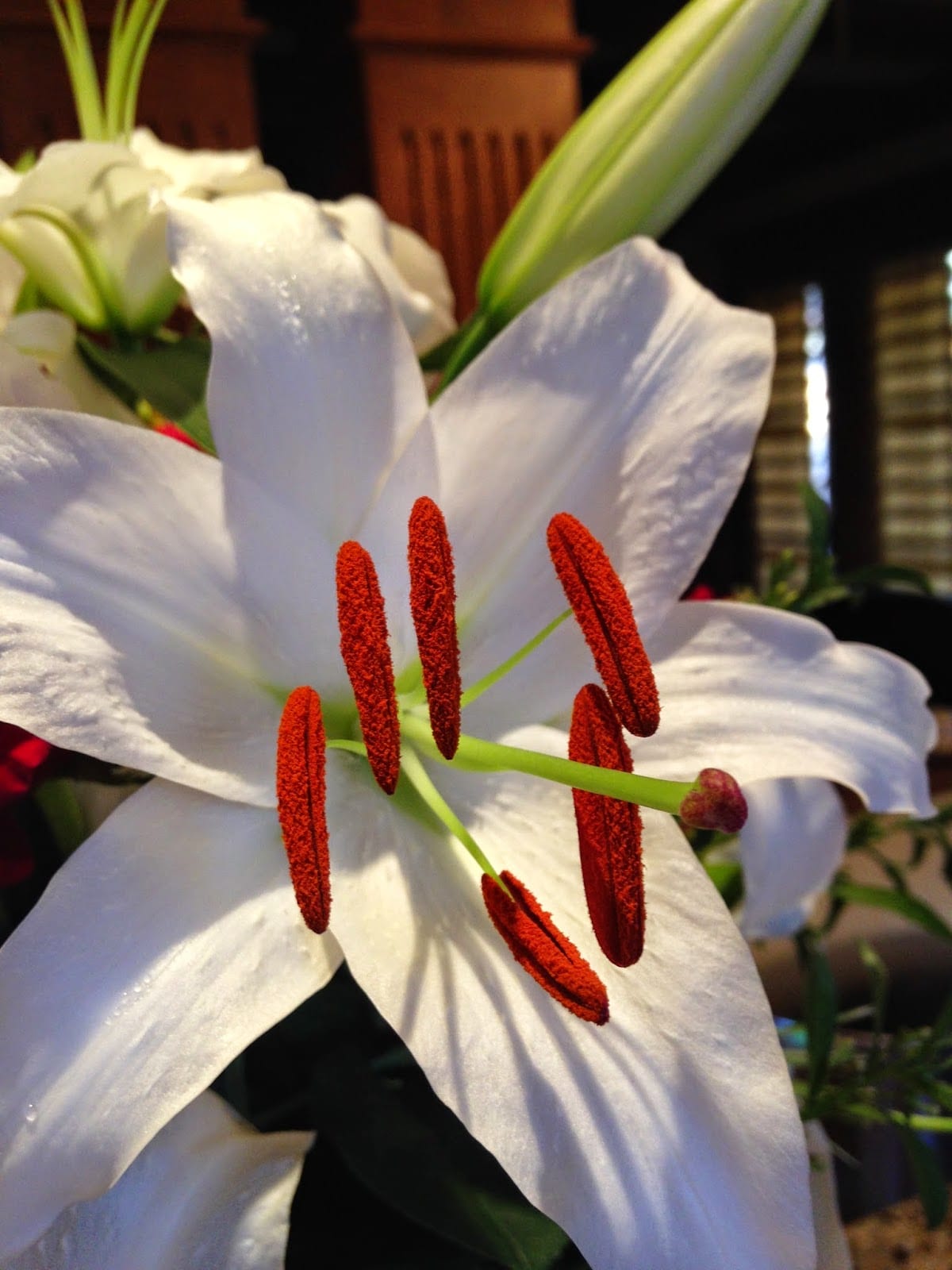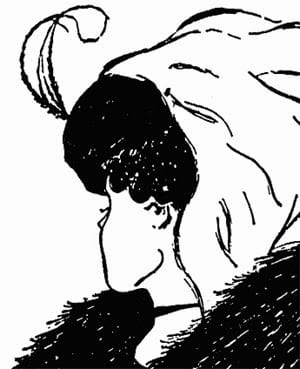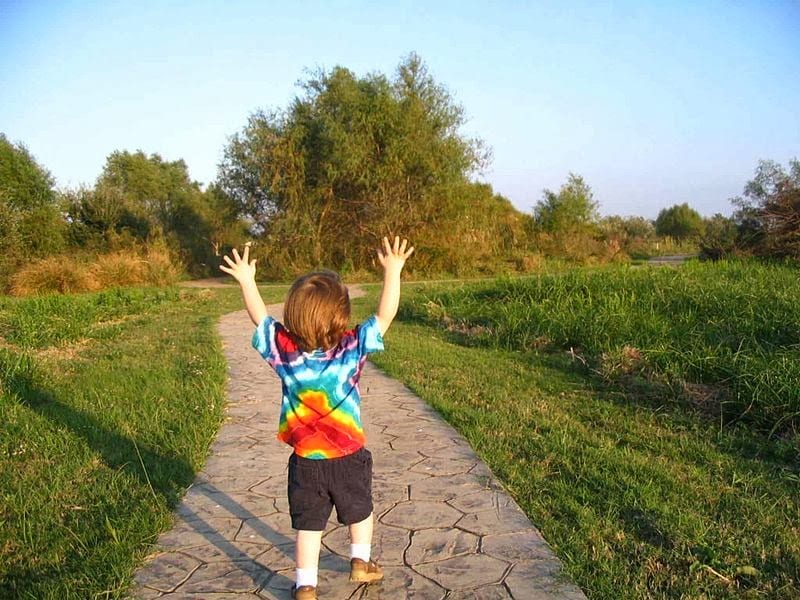Sometimes it’s hard to imagine that Eve and Lola came from the same stuff. They are so different in the way they approach the world. As a parent it is exciting and amusing to watch them and often, exhausting, because there are no shortcuts. Just because I went through one stage with Eve doesn’t mean I know how to handle it with Lola, but it has given me a new way to look at the world. I am reminded that the choices we make are rooted in one of two things: our values or fear. I am reminded that it is this that makes all the difference and that if, as a spectator, I choose to remove judgment, I can learn a lot about what makes someone tick.
My girls each learned to walk in very different ways. While there are some things that parents and caregivers can do to help a child begin walking, ultimately it is something they must do for themselves. And while Eve and Lola both had the exact same goal – learning to walk independently – their methods were distinct and reflected exactly who they each were.
Eve took it step by step. She practiced shuffling along the couch as she held on with both hands. She worked on pulling herself to a standing position in the middle of the room without any props. She spent days standing and clapping, standing and holding objects, standing and babbling loudly. It took her nearly two weeks to take her first steps. Her overriding values were safety and mastery. She was doing everything possible to ensure that she could walk without falling or, if she fell, that she could get herself back up without help. Two weeks of methodical preparation, exploring as many possible combinations and permutations as she could think of, led to her walking without ever falling. She never had that drunken-toddler gait that so many new walkers do and she was supremely confident.
Lola just wanted to walk. Her overriding value was speed. She wanted to get from Point A to Point B as fast as she possibly could and so her method was to use the wall or the furniture or a toy or her big sister for support. She toppled over constantly. She was covered in bruises for weeks, but she never cried about it. She kept her eye on the prize and just did it. She jumped in with both feet and once she figured out walking, she moved immediately to running. She careened into walls, tripped over toys, leapt before she looked, and never gave up. She was driven by the need to keep up with the older kids, to just get somewhere. She didn’t care about safety or looking goofy or falling over. She was just thrilled to be moving fast.
As I look at my girls now I see that they do, indeed, still share many of the same goals, but their everyday lives are vastly different because of the values they live by as they head in that direction. Instead of comparing them to one another, I can choose to step back and see each of them in light of what their journey is telling me about who they are as individuals. Once I know the driving force behind their decisions, I can figure out how to support them along the way and perhaps steer them away from being motivated by fear when it shows up. I am reminded that, once again, remaining curious about the girls is a much more interesting and nurturing way to parent.
Eve took Driver’s Ed this summer and I watched as she pulled out all of her cautious, process-oriented tricks once again. She is a very conscientious driver and is living true to her values of safety and precision. I can only hope that Lola approaches driving differently than she did walking, because in this case, speed is not something I can support. Fortunately, I have two years to work that out with her.
Tag Archive for: mindfulness

It has been a busy time. Bubba was in Australia on business for a week (yeah, I know) and I’m getting the word out about The SELF Project and attending high school musical productions and basketball games and feeding kids and doing my best to make my way through the state health exchange and all its software glitches that leave them asking me to verify my 12-year old’s monthly income (seriously) or telling me that Bubba’s social security number has fouled things up and it might be a few days before they can fix it….
In the last week I also made the final edits in the chapter I wrote for a new book called “Mothers and Food” for Demeter Press and prepared for a town-hall style meeting with the Surgeon General here in Seattle that took place on Tuesday. I spent yesterday writing a lengthy description of the meeting after it went oh-so-disappointingly (politics ruled the day, to put it mildly). My girls are in the rut they get into every so often that pits them against each other in all ways big and small and leaves the grit of discontent fouling every surface in the house, and this lack of Winter we had here in the Pacific Northwest has sent my seasonal allergies into a tailspin three months early.
So all of that could have made me a little on edge. Perhaps. Maybe just a little bit overwhelmed and irritable. And I’m definitely mindful of that, noticing the extra bit of tension I hold in my chest and stomach and jaw and trying to be curious instead of reactive. Measuring my responses the best I can.
If you read my last post, you know that Lola, my youngest and generally affectionate and engaged child, has recently discovered the joy of hanging out in her room alone, either texting her friends or playing guitar or watching goofy YouTube videos. When Bubba was gone last week and Eve was constantly either in rehearsal or performing in the musical, I felt her absence keenly. And while I got a lot of writing done and read two books, I was sad that she doesn’t seem to want to hang out or go for walks with me anymore right now. I remember this stage with Eve and I know that it isn’t about me. I also know it won’t last forever, but it still sucks.
Last night we were all four in the house at the same time for the first time in over a week and I enticed the girls down to watch Modern Family. Eve took the recliner and Lola sat in the kitchen having a snack while Bubba and I sat together on the couch. Pretty soon, I realized that we were the only two laughing at the show and I looked over to see Eve texting someone and caught Lola doing the same thing from the table behind us. I may have forgotten to be mindful of my feelings at that point. I may have succumbed to the sadness and frustration and made some sarcastic comment about how nice it was to have us all do something together. It may have gone over like a turd on a dinner plate. Yup.
This morning as I drove Lola to school, I did it again. “Hey, you did a nice job straightening up your bedroom last night, dude…….” I paused a beat, “Even if you were totally ignoring us afterwards while we were trying to have some family time.”
“Geez, Mom. I get it. You said it four times last night and it pissed us off then. Did you think saying it again this morning was going to be any better?” (This was all said in a very calm, very kind tone of voice, lest you think Lola is the most insolent, rude child on the planet. You should also know that on more than one occasion, I have praised this child for calling me on my BS – if I try to shame them or guilt them into something, if I tell them about the dangers of using superlatives and then turn right around and use one myself, etc. So I have only myself to blame if she continues to point out my inconsistencies.)
I took a deep breath. Or four. I thought about what it was like to be a teenage girl and how my bedroom and my friends seemed like the only safe haven. I thought about how much I hate it when people are passive-aggressive with me instead of just saying how they feel. And then I spoke, “You’re right. I’m sorry. I will try to do better. That was a pretty back-handed way to give you a compliment. You did do a nice job on your room and I appreciate it. And I miss hanging out with you even if I know it’s perfectly normal for you to be doing what you’re doing and it will pass.”
She looked at me, nodded her head, smiled, and flipped on the radio.
“Thanks, Mom.”
When I look at this image, the first thing I see is an old woman and it’s hard to see anything else. But as soon as someone points out the young lady facing away from me in the same lines on the page, it is nearly impossible to see the old woman again. I am stuck with the view of the young lady.

In order to switch back and forth, I am forced to focus on certain parts of the image instead of looking at the whole. If I want to go back to the view of the old woman, I seek out the line of her mouth and raise my eyes up to her beak-like nose.
If I then want to see the young lady again, I look out to where her eyelash and nose are to shift perspective. And as I do so, I am reminded that I possess the same power of perspective in my daily life.
Perception is reality, right? So if we’re in a challenging situation, or a pattern in our lives where our default perspective is glass-half-empty, it’s up to us to change the way we look at it. The trick is not to fill up the glass, but to see that it is half full instead. We have to focus on certain parts of the whole that help us to see things in a different way, and it is important to teach our kids how to do this for themselves. As they hit adolescence and emotions become king, it can be really difficult to perceive things in a positive way, and once the negative patterns have been set, it takes work to change them.
If you have a teen who sees things in a decidedly unhappy way (I hate school, nobody likes me, I suck at math/history/lit), there’s no use challenging their perception. You will get nowhere by disputing their sense of reality or belittling their emotional responses, but you can help them turn the tide slowly by helping them see things in a different way. One powerful way to do this is to begin a gratitude practice (although you may not want to call it that).
When Eve started high school there were a lot of challenges and it didn’t take long for her to feel like a square peg in a round hole. After weeks of angst and hand-wringing (on my part), lots of conversations designed to build her up, and a few frustrated arguments, I decided to lead by example. Every night before turning my bedside lamp off, I texted Eve a list of three things I was grateful for and asked her if she had three to tell me about. I wanted the last thing in her mind before sleep to be happy. She started out slowly, often able to come up with one or two things, but sometimes getting stuck. It took a week or so before she was texting me first and asking for my reply, and her list of things has deepened from “my soft pillow” to items like “teachers I can trust” and her own strengths. Her perspective is shifting right before my eyes and I would be remiss if I didn’t say that it has made a difference in her willingness to get up and tackle each new day as it comes, challenges and all.
It is a practice, and, like the effort it takes to focus my eyes on one set of lines or another in that drawing when I want to see a certain perspective, it is continual. The best part about it, though, for me, is the reminder that I am ultimately in charge of which lenses I see the world through – hope or fear, scarcity or abundance, gratitude or anger – and I hope that my girls are learning that, too.
What a week! I am putting the first touches on the website for my new project (that I’ve been hinting about here for a while, now), and it is a lot of work, but it’s really fun. You can visit the site here and give me any feedback you have on what you see/what I might change or add. The endeavor is called The SELF (Social-Emotional Learning Foundations) Project. The goal is to bring social-emotional education to tweens and teens at schools, after-school programs, and other places where they gather. The curriculum is divided into six areas:
- mindfulness
- living with joy
- dealing with stress, anxiety, and fear
- developing self-worth
- compassion
- big questions of life
“Smart Clip Reminds Parents of Babies Left in Cars”

I’ve got something stuck in my craw. And ironically, the song that has been going around and around in my head for the past two days is “Pompeii” by Bastille. Specifically, the following lyrics:
Yeah, I’ve been here before. And, yeah, I’m asking myself how I’m going to be positive and forward-thinking about all of it. Bubba is on board, as are several other folks. We all agree the situation is untenable and something has to change, but the wheels are moving very slowly and if history is any indication, they will stop the vehicle well short of a solution. Several times in the past week I have noticed my jaw set, my breathing shallow, my thoughts rotating in the same old pattern, wearing a path in my brain. While we were making dinner together on Sunday night, I told Bubba, “I’m trying really hard not to get emotionally tied to a specific outcome.”
“Why not?” he stopped what he was doing and turned to me. “I think you SHOULD be.”
I was surprised. He is usually the guy who knows exactly what his boundaries are and how to engage with things he can control and disengage from things he can’t. He is always cautioning me that I’ll make myself crazy if I get too connected to one particular scenario in my mind. His reaction this time only served as a reminder of how long this has gone on without any resolution, that he is just as frustrated as I am that we have acted in all the ways we know how with mindfulness and honesty and concern to no avail.
And yet, I am making myself crazy. His passion and the passion of other folks who have heretofore been quiet and complacent is only serving to reignite my commitment to sparking change. While it feels good to know that I’m not alone, that something is really wrong here, ultimately I have no say in whether things change, and I’m not willing to quit being part of the institution that so desperately needs to change. The person who has the power is a dear friend of mine and I can’t understand why he won’t do what needs to be done, but I can’t force him to do it. I have my suspicions that he is acting (or not acting) out of fear, and my intuition about these things is generally pretty clear. I know what a powerful motivator fear is and I truly understand why he would feel that way. I also have to acknowledge that, despite assurances that the wheels are turning, my faith is quickly eroding.
This lack of power to effect important change in someone else’s life is definitely a theme in my world right now. I had to laugh this morning as it occurred to me that perhaps this is a training ground for dealing with my girls and the life choices they will make without (or despite) input from me or Bubba. Right now, my boundaries are nearly nonexistent and I’m struggling to imagine what they might look like. I am certainly in need of some sort of buffer as I figure out how to be involved with the parts of this organization that are doing amazing work without feeding the part that is toxic and destructive. I suspect the answer lies somewhere in the realm of love and acceptance but the cloud of frustration that is hanging over my head is pretty vast right now.
“In a culture of deep scarcity – of never feeling safe, certain, and sure enough – joy can feel like a setup.” Brene Brown in Daring Greatly

I lived those words for most of my life. Every time I found myself knee-deep in joy I fantasized about when someone would come pull the plug and it would all drain away. When the girls were two and four, Bubba was traveling more often than not, struggling with an undiagnosed illness that left him hospitalized every few months, and I was scared. I was wracked with stomach cramps and sinking deeper and deeper into depression with every passing day and I somehow felt right at home. While I couldn’t accurately predict what any one day would bring, dealing with crisis after crisis kept me busy and feeling competent. I could put out fires all day long and, while I was exhausted at night, dealing with one fire meant that I didn’t have to worry when or where the next one would flare up. If a day passed without anything falling apart, my nerves were stretched taut as I waited, hypervigilant, scanning the landscape for the slightest new flame. I expected danger. I anticipated fear. I did what most of Brene’s research subjects talked about; I lived in fear so that when something awful happened, I was already in the trench and wouldn’t have to feel the pain of falling or climbing back down. It was easier to stay in the dark than to suffer the loss of light.
Or so I thought.
These days I expect joy. Despite a very challenging summer and early fall, struggling with a major construction project that is two months behind schedule, one pet’s death and a cancer diagnosis for another, and a very close call with one of our daughters, I have somehow managed to stay positive. Instead of waking up each morning in trepidation, worried about what this day may bring, I open my eyes and seek the light.
In Daring Greatly, Brown writes about gratitude being the antidote to fear of joy. She says that people who practice counting their blessings aren’t afraid to feel joy like so many others. I believe that wholeheartedly and credit my own daily gratitude practice with helping change my perspective on life, but I think there is another step beyond gratitude that is even more powerful. If the spectrum starts on the left at fear of joy (or, as Brown says it, “foreboding joy” – that feeling of waiting for the other shoe to drop the second you realize you are happy beyond measure), gratitude is nearing the other end, but I say that the far right end of the spectrum is expecting joy.
I wake up every day expecting joy. Knowing that no matter what challenge or sadness I may face today, there will also be joy. Something will happen today that will bring me pure happiness. This is probably the single biggest thing ever to happen to me.
“Do we deserve our joy, given our inadequacies and imperfections? What about the starving children and the war-ravaged world? Who are we to be joyful?” Brene Brown, Daring Greatly
Indeed. Who am I? Why do I deserve to be joyful? I used to ask myself this question, and then, at one point, a friend pointed out to me that I certainly deserved it, given the struggles I have had in my life – from a difficult childhood to my husband’s prolonged illness and beyond. I calculated up the traumas I have faced and had to agree with her that I probably did ‘deserve’ joy on some level. But this entire notion of deserving joy is something I am patently uncomfortable with. For one thing, as a mother, I don’t want my children to have to EARN their joy by enduring hardship, or worry that if they do live joyful lives, they will one day have to pay for it with trauma and unhappiness.
The fact is, there isn’t some High Priestess of Joy doling out happiness according to a balance sheet she’s been given about who deserves what. Joy is out there in the world. We simply have to train ourselves to recognize it, acknowledge it, expect it. Joy coexists with sadness, it doesn’t cancel it out. When I look at my sweet puppy boy lying on his bed, feet twitching as he dreams, I feel a tenderness and an outpouring of love for him and the relationship we have and that love sits side-by-side with the knowledge that he has malignant melanoma and will die sooner than I want him to. The joy and gratitude I feel at having been so lucky to have him in my life are deepened and enhanced by the knowledge that one day soon he will not be here anymore.
We humans like things to even out. We love balance, but we also like to be ready for disaster. The irony is, as we use our energy to prepare for calamity, we rarely prepare for joy. We walk around searching for potholes to avoid, ready to duck if something comes flying, but very few of us spend any time practicing opening ourselves to receive or recognize opportunities for joy. We are creating our own imbalance. I have decided to turn that on its head and, instead, wake up every morning expecting joy, believing that, if nothing else, today I will discover at least one thing that will stop me in my tracks with wonder and awe.

I sit in the front seat of the car outside the vet clinic where I just dropped my baby boy off for xrays to rule out metastatic melanoma.
I feel the prickling behind my eyes and recognize it as fear. One step farther down the path from pain.
And I wonder, what if I stop at honoring the feeling and don’t go so far as to name it?
What if I sit with this ache behind my eyes,
the heaviness in my chest?
Just sit.
How do I arrive at this point and not give in to the inertia that pushes me forward to the next?
The questions.
What if…?
How do I…?
Stop.
I recognize my own tendency toward forward motion. Moving always. Through,
or past.
Even if it means moving into fear, panic, anxiety.
What will I do without this lovely boy?
The question flits into being.
I let it go.
Don’t move past,
through,
away.
Sit with this moment in honor of my boy. This moment is all there is. It won’t last forever but the least I can do is feel it while it’s here and give it space.
And as I sit and breathe, floating in this moment, I discover a place of okay has opened up to me, offered itself, and I sit.

I love it when I can find new places to explore on the Internet. It’s not nearly as productive as exploring in the nature or, say, doing laundry, but at least these two places are just as important. The first came to me from a friend who has children with sensory processing issues (as does Lola). If you haven’t already found it, this is a terrific resource and they have vast stores of information in their back issues.
SI Focus is an online magazine that has articles pertaining to all different kinds of issues for kids and adults who struggle with sensory integration issues. The subscription is fairly inexpensive ($25/year), and you can get a group subscription for several families together to make it even more affordable. I found myself glued to the computer while reading the first issue and am tremendously grateful to my friend Isabelle for passing along the information.
The other link I found through a group on Facebook called “40 Days of Mindfulness.” I joined them in their efforts to have each member meditate for 20 minutes a day for forty days beginning April 1. Twenty minutes indulging myself seemed pretty doable, although I will admit that, only eight days in, it has been as much of a struggle to keep my mind still as a boon, but I’m committed. After all, there are all these people I have to be accountable to! My friend Emily found herself fighting to keep from scolding herself for not living up to the 20 minutes a day and went on a hunt for a meditation around self-acceptance. Viola! She found this article. The article led me to the self-compassion website. At first glance, it appears to be a marketing tool for the author’s books, but I would encourage you to check out the information on the right side of the screen. There is a quiz you can take to see just how self-compassionate you are and exercises to download to increase your own acceptance of yourself. It may sound a little woo-woo, but I truly believe we all could use a little more appreciation for ourselves and I’m intrigued by the research being done. I highly recommend both the Huffington Post article and the site itself.

Had an hour to kill yesterday and I was captive in the mall without any shopping to do and I’d already had my coffee. Luckily there is a very cool newsstand in this particular mall and the Starbucks employees were only too happy to get me a free cup of ice water upon request. I wonder if it was the simplest drink they’d made all day, what with the expanded holiday menu of eggnog, caramel (salted and not), peppermint, chocolate and various other festive flavors.
![]()
Thanks for visiting my site. I’m driven by the exploration of human connection and how we can better reconnect to ourselves, our families, and our communities. Aside from my books, I hope you’ll check out my blog, and some of my other writing to find more perspectives and tools.


